Enhancing resilience of communities to the adverse effects of climate change on food security, in Pichincha Province and the Jubones River basin

Summary
This solution was implemented in Ecuador with the main goal of reducing the vulnerability and food insecurity of communities and ecosystems related to the adverse effects of climate change in the most vulnerable communities within the Province of Pichincha and the Jubones river basin.
The FORECCSA project, as it was also known, emerged as a response by the Ministry of Environment and the World Food Program to the high levels of poverty, food insecurity and climate vulnerability affecting the intervention areas, which, coupled with a lack of awareness and inadequate infrastructure, posed numerous threats to local populations. The project consisted of two main components that supported its overall objective:
Component 1: Develop awareness and knowledge capacity at the community level on climate change and food insecurity related risks
Component 2: Increase adaptive capacity and reduce recurrent risks of climate variability at the community level
Numerous measures were proposed in the 240 communities involved, ranging from infrastructure construction, policy development, natural resource conservation activities, and more. These were considered in terms of three key transversal focuses: climate change, food security and gender equity, and implemented from community-based and ecosystem-based approaches.
Overview
- Location:
- Implementation sites:
-
- Single country
- Multiple locations
- Mountain region:
-
The Andes
- Province:
-
- Pichincha, Azuay, El Oro, and Loja provinces
- Site locations:
-
Pichincha province and the Jubones river basin
- Solution scale:
- Ecosystem type(s):
- Solution type(s):
- Sector(s):
- Climate impact time-scale(s):
- Main benefit associated with the solution:
- Co-benefit(s) associated with the solution implementation:
-
- Climate risk reduction (e.g. reduced risk from floods)
- Economic benefits (e.g. job creation, tourism)
- Environmental benefits (e.g. biodiversity preservation, water security, food security)
- Political benefits (e.g. reduced displacement/migration)
- Technical benefits (e.g. innovative use of geographic information systems)
- Implementation timeline:
-
- 2011 - 2016
Solution details
Main beneficiaries & outcomes
By the end of its implementation, the FORECCSA project had benefited 19,356 people from the 240 communities distributed in the province of Pichincha and the Jubones river basin, which covers part of the provinces of Azuay, El Oro and Loja. Results included the development of 47 local climate risk and vulnerability assessments, 50 adaptation measures, 2 early warning systems on climate risk and food security, 49 local climate change adaptation plans, and 38 local adaptation policies.
The benefits were wide-ranging in the regions, however, greater efforts were made to add a gender focus in the planning, implementation and evaluation of solutions, and to improve the participation and well-being of women. Furthermore, the communities in which the project worked included populations with high levels of poverty, as well as members of various indigenous groups such as the Kiwchas and Saraguros.
Planning and implementation
The implementation of the solution began in 2011 under the responsibility of the Ministry of Environment (MAE), which in coordination with the Ministry of Agriculture (MAG), acted as executing agency. Other partners included the United Nations World Food Programme (WFP), acting as the multilateral implementing agency, as well as the Decentralized Government of the Province of Pichincha and the Public Consortium of the Jubones River Basin.
In the initial stages of the project, several activities were carried out reflecting specific requirements of Ecuadorian legislation applicable to externally financed projects. These included a design process, signing of agreements between the parties, development of project documents, meetings and workshops, the generation of an inception report, and the designation of project staff positions and responsibilities. Moreover, to facilitate the subsequent execution of the measures, which started in 2014, an implementation plan was also created consisting of important elements such as the description of activities and milestones, an assessment and training plan for capacity building, and communication, sustainability, and monitoring plans.
Finance
The project was financed by the Adaptation fund in the form of a grant. The next table describes the amounts and distribution of the total cost:
|
Project Component 1 |
USD 1,405,000 |
|
Project Component 2 |
USD 4,924,200 |
|
Project/Programme Execution Cost |
USD 632,920 |
|
Total Project/Programme Cost (=Project Components + Execution Cost) |
USD 6,962,120 |
|
Implementing Fee |
USD 487,348 |
|
Grant Amount (=Total Project/Programme Cost + Implementing Fee) |
USD 7,449,468 |
Innovation
One of the most innovative aspects of this solution was the great diversity of social actors involved in the different project processes. Additionally, the climate risk management system for food security developed in the Jubones river basin also constitutes a novel proposal in terms of the analysis and interaction of information as an input for decision-making at the local level. This approach, which correlates climate hazards occurring in the river basin with food security problems, was useful in motivating and facilitating these and other prevention actions that are extremely important not only for mountain environments but also for their surroundings.
Performance evaluation
The evaluations carried out to assess the performance of the project and the effectiveness of the adaptation measures include the completion of a mid-term and a final evaluation conducted in 2015 and 2018 respectively by external agencies. The final evaluation involved the analysis of project documents, interviews with local and national stakeholders, field visits, focus groups with local participants and a final evaluation workshop with the project technical team. In addition, to couple the information gathered with evidence-based responses, an evaluation matrix was also designed and applied through several field data collection instruments containing 31 research questions related to the six evaluation themes, which included:
- Evaluation of achievement of the Project’s outcomes
- Evaluation of the process developed to obtain the attained outcomes
- Evaluation of the monitoring and evaluation system used
- Evaluation of the sustainability risks of outcomes and progress towards the expected impact
- Evaluation of the Project’s contribution to the objectives, impacts and goals of the Adaptation Fund
- Management of gender challenges
Annual progress reports were also prepared and submitted to the adaptation fund. They provided detailed information on lessons learned and project indicators with a gender perspective.
Long term project sustainability and maintenance
Efforts carried out to promote and support the long-term sustainability of the project include the strengthening of adaptive capacities of beneficiary groups and populations through training workshops on the administration, operation and maintenance of the adaptation measures. For example, the organization of irrigators was strengthened for the adoptive planning, operation, maintenance and management of the irrigation systems. Additionally, the generation of parish adaptation plans, and the legislation of irrigation water boards and adjudications also serve to this particular purpose. A Strengthening and Sustainability Plan (PFSC) was as well signed between the Decentralized Autonomous Government of the Province of Pichincha (GADPP) and the Ministry of Agriculture and Livestock (MAG).
Nevertheless, the project’s final evaluation reports acknowledge that financial risk is one of the biggest challenges that the project could face in the future for the maintenance and replication of achievements.
Capacities for design and implementation
Knowledge
In this project, the knowledge dimension was very important for the design and implementation of solutions tailored to the local realities. This represented an example of the critical link between scientific knowledge and local perceptions in the development of strategies that address the vulnerability of food security to climate change.
From the beginning, it was clear that studies on the evolution of climate change and the local vulnerability and food security conditions were needed to meet the established objectives. Baseline analysis were carried out with this purpose in mind. Also, it was considered that the gender focus of the project required specific knowledge and experience to be managed. By the completion of the activities, greater knowledge was achieved in the selected communities of the province of Pichincha and the Jubones river basin. Finally, the project also planned knowledge management, in-line with best practices, and the further harvesting of lessons that persist after the project closing.
Technology
Innovative technological measures were one of the proposed type of solutions within the framework of the FORECCSA project, including climate information systems, aspersion and drip irrigation, production of organic fertilizer and support to family orchards, resulting in increased production and additional income from the surpluses sold at markets.
Political / Legal
The project team’s work with local authorities was critical in the planning and implementation of solutions by allowing the implementation of activities and supporting the project’s appropriation in the territory. Furthermore, such cooperation also motivated the arrival of Ministry of Environment of Ecuador (MAE) technicians to parishes and communities that they had not reached before, helping to strengthen their leadership in the process of elaborating local adaptation plans for food security with a gender approach. A total of 38 local adaptation policies were developed.
On the other hand, the development of the project was also in line with the Constitution of the Republic of Ecuador (2008), the National Development Plan (2009-2013), the National Plan for Good Living (2013-2017) and the Development Plan for Life (2017-2021).
Institutional
The efficient coordination of the project’s leading institutions was facilitated by the creation of a National Steering Committee (CDN) constituted by the three main involved entities (United Nations World Food Program, Ministry of the Environment, and The Ministry of Agriculture), which served as the highest authority for decision making. While a Technical Committee was also formed to act as a platform for the joint analysis of implementation activities. A Technical Committee was also formed to support the joint analysis of implementation activities. This latter included the participation of the Autonomous Decentralized Government (GAD) of the Province of Pichincha, the Consortium of the Jubones River Basin (CCRJ) and the local coordination of the Project.
At the regional and local levels, the executing partners were the GAD of the Province of Pichincha, thirty-seven municipal and parish GADs of the Jubones River Basin and, eventually, the Jubones River Basin Consortium.
Socio-cultural
The proximity between the project team and local populations, both for research and implementation, was a fundamental element for the articulation and establishment of agreements with local and national stakeholders. In its execution, this solution incorporated a general procedure for capacity building that included the establishment of partnerships with state institutions, NGOs and universities, as well as participatory methodologies with local communities. Among other things, these strategies helped to reach agreements and consensus to facilitate the implementation of measures and public policies, especially in the field of climate risk prevention.
Outlook & Scalability
Barriers and adverse effects
An initial problem encountered by the project was the duplication of logical framework formats between the donor and the state planning institution, which, although finally solved, entailed significant additional work and a delay in the start of activities. Likewise, delays were also linked to the underestimation of the time needed for the generation of internal regulations, definition of roles, coordination spaces and methodological procedures. It is therefore recommended for other solutions that all regulatory and administrative requirements be foreseen, that sufficient time and budget be allocated for these purposes, and that a management model be defined from the start.
In addition, the construction of methodologies, tools and explicit indicators of sustainability at the level of payment for ecosystem services was also a challenge. In this situation, the management proposed a more appropriate strategy that could be adapted to the implementation scheme of climate change adaptation measures. For the parishes of Jubones, the elaboration of Plans for Strengthening Sustainability and Closure (PFSC) responding to the specific needs of each parish were proposed.
Transformation and future outlook
The FORECCSA project supports fundamental change in the concerned regions by jointly addressing the most relevant climate-related hazards and impacts in these regions, including droughts, frost and extreme rainfall. By pursuing the project objectives from a multi-stakeholder perspective, the overall adaptive capacities and knowledge of both communities and institutions were strengthened, improving general resilience and ensuring the potential long-term sustainability of the measures.
Potential for upscaling and replication
One of the three fundamental pillars of the project’s knowledge management strategy included the development and transfer of capacities for the search for replicable and scalable models that could be transferred to the government and used in future projects. Similarly, at the closing time of this solution, the World Food Program was already replicating this implementation model that links the effects of climate change on food security and nutrition. This was carried out in Ecuador and Colombia through their respective Country Offices in the binational project “Building adaptive capacity to climate change through food security and nutrition actions in vulnerable Afro and indigenous communities in the Colombia-Ecuador border area”.







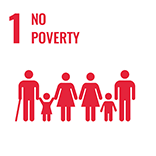
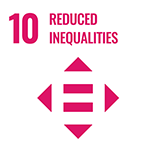
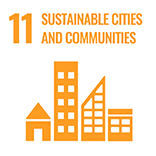
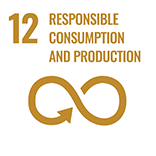

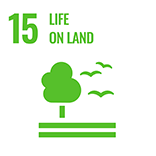

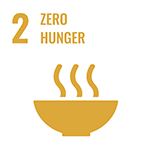


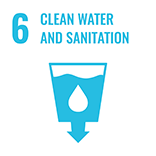


Comments
There is no content